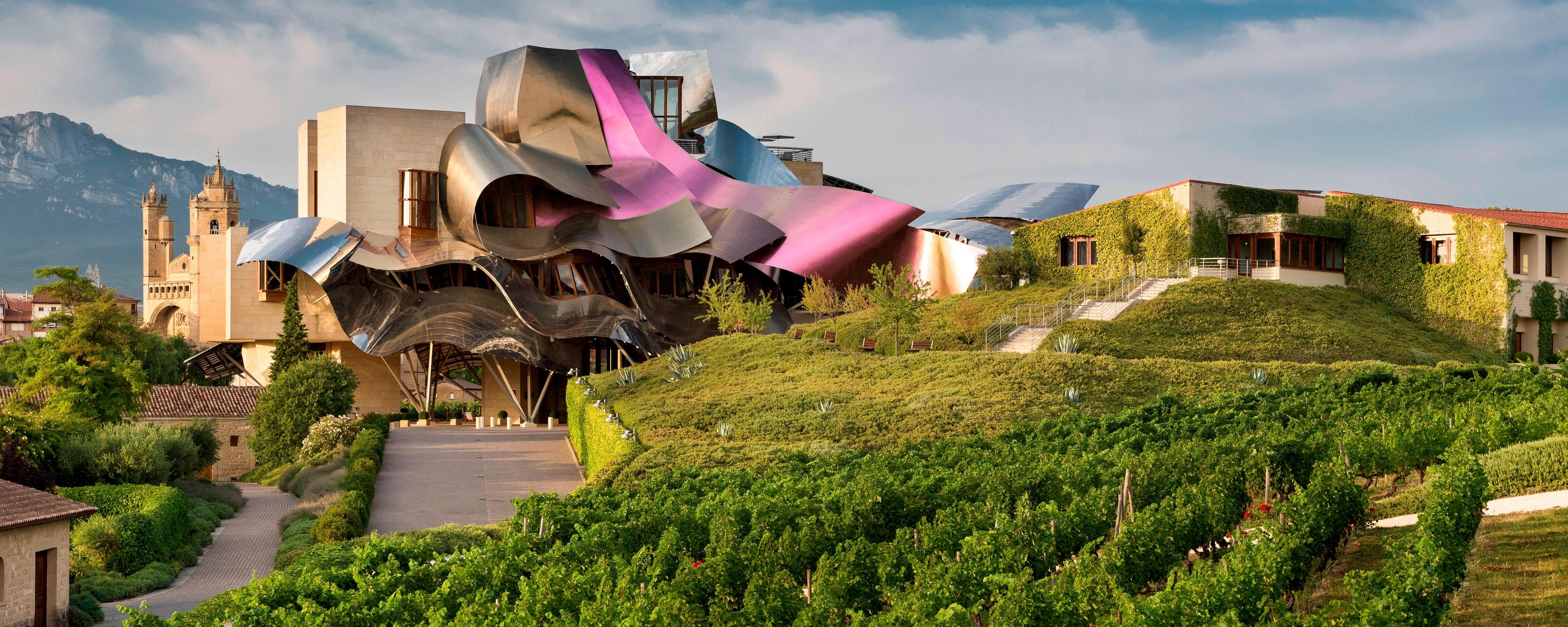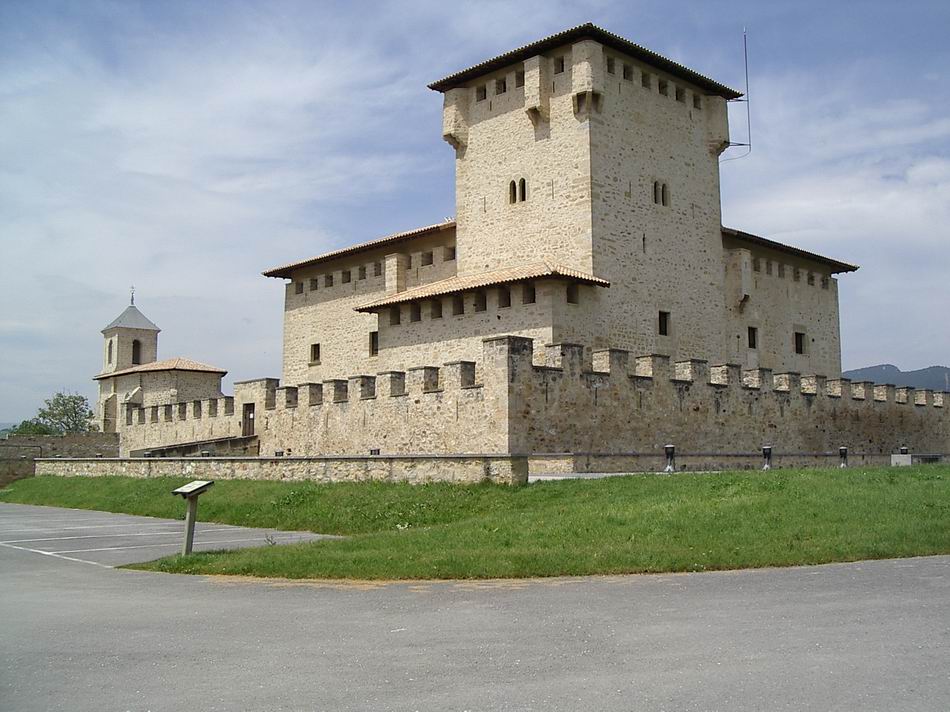La Vuelta 2020 - Stage 7: Vitoria-Gasteiz > Villanueva de Valdegovia - 159,7 km *Spoilers*

blazing_saddles
Posts: 22,730
in Pro race
Stage 7: Vitoria-Gasteiz > Villanueva de Valdegovia - 159,7 km
Tuesday, 27th October.
At 159.7 kilometres, the 7th stage of La Vuelta is a challenging race, traversing the hilly region between Vitoria-Gasteiz and Villanueva de Valdegovía. Featuring a tough climb with 19 kilometres out and a flat finale, the course is tailored for a successful breakaway.

While the route is lumpy for most of the race there is one climb that stands out. Therefore, the route being not challenging enough for GC riders to open up time gaps, the chances are that the breakaway will last until the end. A battle to be part of it is to be expected.

The race kicks into gear in Vitoria Gasteiz and the first 50 kilometres take place on undulating terrain before the riders drop down to the foot of the first climb. The Puerto Orduña is 7.8 kilometres long and the average gradient sits at 7.7%, while the ascent kicks up to 14% just before it flattens out inside the last 2 kilometres.

The descent leads onto a more lumpy phase in the race until the flattest part of the route navigates the riders back to familiar terrain. Once again, they drop down to the foot of the Puerto Orduña to tackle the same climb as before on the same side.
Still 18 kilometers to go at the top, 6 of which are on descent. A short kick up leads onto the flat finale.

In the 2018 Tour of the Basque Country Jay McCarthy sprinted to victory in Valdegovia.
The intermediate sprint at kilometre 117.3 comes with time bonuses of 3, 2 and 1 seconds.
Vitoria-Gasteiz
18 stages of La Vuelta have departed from Vitoria-Gasteiz
249.176 inhabitants.
Vitoria-Gasteiz is the seat of government and the capital city of the Basque Country and of the province of Araba/Álava in northern Spain.
It has been over 60 years since a La Vuelta stage first departed from Vitoria-Gasteiz. These avenues, though modernised, have remained almost intact over the decades. The excellent preservation work that has been carried out in its iconic medieval city centre has made Vitoria-Gasteiz a must-see destination for history lovers. Its history is also linked to cycling, as its cobblestone streets are the birthplace of Igor González de Galeano, La Vuelta podium (1999), who also wore the yellow jersey i the Tour de France for an entire week, in 2002.

Vitoria-Gasteiz's vicinity is home to world-renowned wineries such as Ysios (by Santiago Calatrava) and the Marqués de Riscal Hotel (by Frank Gehry)


Villanueva de Valdegovia
Unprecedented Vuelta finale
991 inhabitants
Villanueva de Valdegovía is a small rural Basque town with a very particular feature that attracts the attention of all who visit it: the Varona Tower. This historical complex, made up of a palace and a defensive tower, is considered the best-preserved medieval fortress in the Álava territory. Following the passing through of the World Tour peloton in 2018, during the Tour of the Basque Country, its tower is now getting ready to leap to the grand stage with La Vuelta.

Basque Dishes of the Day.
Baked txangurro
Baked, stuffed spider crab is a classic dish which hails from San Sebastián. The crab is stuffed with ingredients such as onions, tomatoes, leeks, brandy and parsley, and is topped with bread crumbs before being baked in the oven.

Torrijas
This version of French toast is one of the most indulgent Basque desserts – and one of the most delicious too. Made from brioche-type bread, they’re soaked in milk and egg, before being fried. To finish, the torrijas are smothered in a sweet, sticky syrup flavoured with cinnamon and orange.

Tuesday, 27th October.
At 159.7 kilometres, the 7th stage of La Vuelta is a challenging race, traversing the hilly region between Vitoria-Gasteiz and Villanueva de Valdegovía. Featuring a tough climb with 19 kilometres out and a flat finale, the course is tailored for a successful breakaway.

While the route is lumpy for most of the race there is one climb that stands out. Therefore, the route being not challenging enough for GC riders to open up time gaps, the chances are that the breakaway will last until the end. A battle to be part of it is to be expected.

The race kicks into gear in Vitoria Gasteiz and the first 50 kilometres take place on undulating terrain before the riders drop down to the foot of the first climb. The Puerto Orduña is 7.8 kilometres long and the average gradient sits at 7.7%, while the ascent kicks up to 14% just before it flattens out inside the last 2 kilometres.

The descent leads onto a more lumpy phase in the race until the flattest part of the route navigates the riders back to familiar terrain. Once again, they drop down to the foot of the Puerto Orduña to tackle the same climb as before on the same side.
Still 18 kilometers to go at the top, 6 of which are on descent. A short kick up leads onto the flat finale.

In the 2018 Tour of the Basque Country Jay McCarthy sprinted to victory in Valdegovia.
The intermediate sprint at kilometre 117.3 comes with time bonuses of 3, 2 and 1 seconds.
Vitoria-Gasteiz
18 stages of La Vuelta have departed from Vitoria-Gasteiz
249.176 inhabitants.
Vitoria-Gasteiz is the seat of government and the capital city of the Basque Country and of the province of Araba/Álava in northern Spain.
It has been over 60 years since a La Vuelta stage first departed from Vitoria-Gasteiz. These avenues, though modernised, have remained almost intact over the decades. The excellent preservation work that has been carried out in its iconic medieval city centre has made Vitoria-Gasteiz a must-see destination for history lovers. Its history is also linked to cycling, as its cobblestone streets are the birthplace of Igor González de Galeano, La Vuelta podium (1999), who also wore the yellow jersey i the Tour de France for an entire week, in 2002.

Vitoria-Gasteiz's vicinity is home to world-renowned wineries such as Ysios (by Santiago Calatrava) and the Marqués de Riscal Hotel (by Frank Gehry)


Villanueva de Valdegovia
Unprecedented Vuelta finale
991 inhabitants
Villanueva de Valdegovía is a small rural Basque town with a very particular feature that attracts the attention of all who visit it: the Varona Tower. This historical complex, made up of a palace and a defensive tower, is considered the best-preserved medieval fortress in the Álava territory. Following the passing through of the World Tour peloton in 2018, during the Tour of the Basque Country, its tower is now getting ready to leap to the grand stage with La Vuelta.
Basque Dishes of the Day.
Baked txangurro
Baked, stuffed spider crab is a classic dish which hails from San Sebastián. The crab is stuffed with ingredients such as onions, tomatoes, leeks, brandy and parsley, and is topped with bread crumbs before being baked in the oven.

Torrijas
This version of French toast is one of the most indulgent Basque desserts – and one of the most delicious too. Made from brioche-type bread, they’re soaked in milk and egg, before being fried. To finish, the torrijas are smothered in a sweet, sticky syrup flavoured with cinnamon and orange.

"Science is a tool for cheaters". An anonymous French PE teacher.
5
Comments
-
2
-
Confusing stage map - they seem to go in two different directions from the start line.
Edit - Probably because I'm colour blind! The maps on the Vuelta website are clearer.0 -
It's a pretty confusing route and a shame it seems to travel in ever deceasing circles as there's a brisk South Westerly blowing."Science is a tool for cheaters". An anonymous French PE teacher.0
-
The northbound section of the loop could be pretty good in that case as long as it hasn't got too much shelter. There's a bit of a climb on the eastbound bit but still opens up possibilities hopefully.blazing_saddles said:It's a pretty confusing route and a shame it seems to travel in ever deceasing circles as there's a brisk South Westerly blowing.
Coverage seems to start really late after being used to the Giro for the last few weeks.0 -
Rémi Cavagna is off on yet another early solo break. I wouldn't be surprised if riding an entire GT stage solo to victory was on his bucketlist (something Tony Martin almost achieved in the 2013 Vuelta IIRC).0
-
Still no break has been able to get away.
It will be formed on the first ascent of the first cat climb."Science is a tool for cheaters". An anonymous French PE teacher.0 -
At what point does a break become a split in the peloton? I guess the difference is whether the larger group allowed them to go or not. Only 73km to go, 'break' is close to 40 strong and a lead of 1.30 coming down from 1.45 when I first switched on as it is just too big.0
-
Froome relegated to being Kiriyenka and having to sit on the front towing the bunch.1
-
Had my hands over my eyes for a second there, AG2R rider returning clothing to the car and gets given a hand sling from the driver just as two cars in front came to a near standstill. Rider not looking but turned around just in time to steer through a small gap.1
-
Break has gone out to 2'18" and has some dangerous riders in there in Valverde, Bennett and Nieve.0
-
Jumbo happy at the back of the break. Kuss not going for KOM.
Looks like a GC strategy.The above may be fact, or fiction, I may be serious, I may be jesting.
I am not sure. You have no chance.Veronese68 wrote:PB is the most sensible person on here.0 -
The Kirby - Kelly standard of commentary is shockingly bad today and I don't mean in terms of the usual irritations, just rider ID etc."Science is a tool for cheaters". An anonymous French PE teacher.0
-
I take that back. Looks like Kuss is indeed going for the climb.pblakeney said:Jumbo happy at the back of the break. Kuss not going for KOM.
Looks like a GC strategy.The above may be fact, or fiction, I may be serious, I may be jesting.
I am not sure. You have no chance.Veronese68 wrote:PB is the most sensible person on here.0 -
Kuss goes pop!The above may be fact, or fiction, I may be serious, I may be jesting.
I am not sure. You have no chance.Veronese68 wrote:PB is the most sensible person on here.0 -
Jumbo pair both running out of gas"Science is a tool for cheaters". An anonymous French PE teacher.0
-
Roglic must be chuffed having two key supporter riders using up their energy for nothing.0
-
I assumed they were approaching the finish from the utterings of Carlton I could hear the other side of the wall. Went in to check and the leaders have around 20" over the chase with 10km to go, he was talking about it as though it was a done deal the front group would be contesting the win.0
-
Michael Woods gets it.0
-
Good game of cat 'n mouse that.
I pity any novice viewer who had to figure out what on earth was going on, from the constant stream of misinformation."Science is a tool for cheaters". An anonymous French PE teacher.0 -
Woods takes it from Fraile and Valverde. Odd stage, smallish group of favourites containing remenants of the huge break came in less than a minute back. One day of CK and I'm already pining for Hatch and realising that, even though he tested me at times in the Giro, he is still head and shoulders better.1
-
Does Woods answer to Mick or is this Carlton's (should I say Carl's) new 'Si Clarke'?0
-
He's Micking for all he's worth right now.
Lennie, Mannie, Si and Mick: none of whom go by these nom de Carlton's."Science is a tool for cheaters". An anonymous French PE teacher.0 -
The next sprint stage can't come soon enough for Jakub Mareczko, given he's finished >10 minutes behind the gruppetto in the last two stages.0
-
I've had a think about that. Ineos couldn't let Kuss get too far in front so had to chase, into a headwind, up a 14% climb. A radio call telling them to ease up for tomorrow would explain the sudden deceleration and they did little work in the valley.Pross said:Roglic must be chuffed having two key supporter riders using up their energy for nothing.
I guess we will find out tomorrow.The above may be fact, or fiction, I may be serious, I may be jesting.
I am not sure. You have no chance.Veronese68 wrote:PB is the most sensible person on here.0 -
I rate this higher than the Duck outfit honestly...
...has something of La Vie Claire about itWe're in danger of confusing passion with incompetence
- @ddraver0 -
I was rooting for valverde ..the old doper"If I was a 38 year old man, I definitely wouldn't be riding a bright yellow bike with Hello Kitty disc wheels, put it that way. What we're witnessing here is the world's most high profile mid-life crisis" Afx237vi Mon Jul 20, 2009 2:43 pm0
-
That duck strip is going to be sought after in the coming years trust me"If I was a 38 year old man, I definitely wouldn't be riding a bright yellow bike with Hello Kitty disc wheels, put it that way. What we're witnessing here is the world's most high profile mid-life crisis" Afx237vi Mon Jul 20, 2009 2:43 pm0





